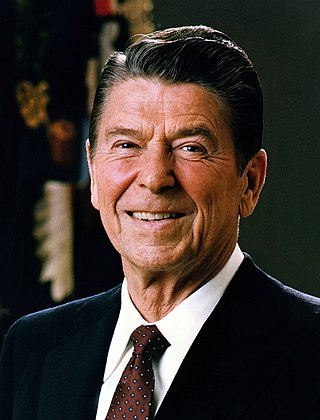
The 2004 North Carolina gubernatorial election was held on November 2, 2004. The general election was between the Democratic incumbent Mike Easley and the Republican nominee Patrick J. Ballantine. Easley won by 56% to 43%, winning his second term as governor. This is the last time a Democrat was elected governor of North Carolina by double digits.

The 1978 United States Senate elections were held on November 7, in the middle of Democratic President Jimmy Carter's term. The 33 seats of Class 2 were contested in regular elections. Special elections were also held to fill vacancies. Thirteen seats changed hands between parties, resulting in a net gain of three seats for the Republicans. Democrats nevertheless retained a 58–41 majority.

United States gubernatorial elections were held on November 7, 2000, in 11 states and two territories. The elections coincided with the presidential election. Democrats gained one seat by defeating an incumbent in West Virginia. As of 2023, this remains the last gubernatorial cycle in which a Democrat won in Indiana.

North Carolina elections to choose members of the Council of State were held November 4, 2008. This coincided with the presidential, U.S. Senate, U.S. House, gubernatorial, and statewide judicial elections.

From January 21 to June 3, 1980, voters of the Republican Party chose its nominee for president in the 1980 United States presidential election. Retired Hollywood actor and two-term California governor Ronald Reagan was selected as the nominee through a series of primary elections and caucuses culminating in the Republican National Convention held from July 14 to July 17, 1980, in Detroit, Michigan.

The 2016 United States House of Representatives elections in North Carolina were held on November 8, 2016, to elect the 13 U.S. representatives from the state of North Carolina, one from each of the state's 13 congressional districts. The elections coincided with the 2016 U.S. presidential election, as well as other elections to the House of Representatives, elections to the United States Senate and various state and local elections.

The 1960 North Carolina gubernatorial election was held on November 8, 1960. Democratic nominee Terry Sanford defeated Republican nominee Robert L. Gavin with 54.45% of the vote.

The 1932 North Dakota gubernatorial election was held on November 8, 1932. Republican nominee William Langer defeated Democratic nominee Herbert C. DePuy with 54.75% of the vote.

The 1940 North Carolina gubernatorial election was held on November 5, 1940. Democratic nominee J. Melville Broughton defeated Republican nominee Robert H. McNeill with 75.70% of the vote.

The 1936 North Carolina gubernatorial election was held on November 3, 1936. Democratic nominee Clyde R. Hoey defeated Republican nominee Gilliam Grissom with 66.69% of the vote.

The 1928 North Carolina gubernatorial election was held on November 6, 1928. Democratic nominee O. Max Gardner defeated Republican nominee Herbert F. Seawell, with just over 55% of the vote. This was, relatively, a close election for the time in North Carolina, with Gardner receiving the smallest percentage of the vote that any Democratic gubernatorial nominee won between 1900 and 1956. The result came against the backdrop of divisions in the state Democratic Party over the controversial nomination of Alfred E. Smith for president. Gardner supported Smith, who lost the state to Herbert Hoover.

The 1920 North Carolina gubernatorial election was held on November 2, 1920. Democratic nominee Cameron A. Morrison defeated Republican nominee John J. Parker with 57.2% of the vote. Both were attorneys in private practice at the time.

The 1904 North Carolina gubernatorial election was held on November 8, 1904. Democratic nominee Robert Broadnax Glenn defeated Republican nominee Charles J. Harris with 61.72% of the vote. At the time, Glenn was an attorney and former member of the state Senate, while Harris was a businessman and former member of the United States Industrial Commission.

The 1948 Arkansas gubernatorial election was held on November 2, 1948.

The 1940 Arkansas gubernatorial election was held on November 5, 1940.

The 1946 Texas gubernatorial election was held on November 5, 1946.

The 1902 Tennessee gubernatorial election was held on November 4, 1902. Democratic nominee James B. Frazier defeated Republican nominee Henry Tyler Campbell with 61.77% of the vote.

Elections were held in Illinois on Tuesday, November 3, 1936.

The 1972 North Carolina lieutenant gubernatorial election was held on November 7, 1972. Democratic nominee Jim Hunt defeated Republican nominee John A. Walker with 56.69% of the vote.

The 1932 United States Senate elections in Colorado took place on November 8, 1932. Incumbent Republican Senator Charles W. Waterman announced that he would not seek re-election to a second term. Attorney Karl C. Schuyler won the Republican nomination to succeed Waterman and faced former Senator Alva B. Adams, the Democratic nominee, in the general election.















